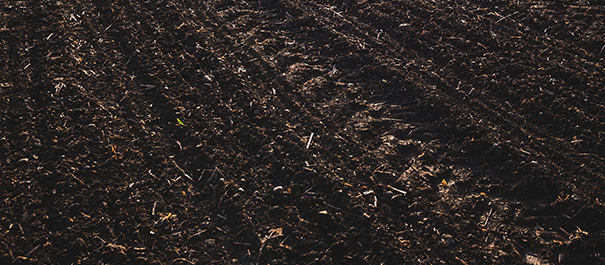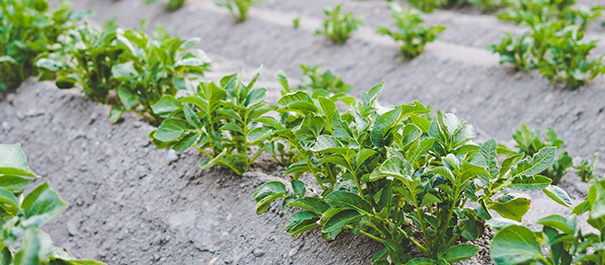






Potatoes (Solanum tuberosum) belong to the nightshade family. They are exceptionally well adapted to our temperate climate, though they do not tolerate frost and the water demand is relatively high. An even distribution of rainfall is needed to achieve high yields. With sufficient rainfall (>160l/m²) and good distribution in the months from May to August, yields of up to 50t/ha (approx. 20t/acre) can be expected.
Potatoes do not prefer any particular soil type. They thrive in both sandy and heavy soils. The best soils for potatoes are high in organic matter and loose soils with sufficient water retention capacity. Depending on the variety and purpose (starch, table or seed potatoes), this crop is very adaptable. They are planted early in the year (end of March to mid-April) and the soil should be as dry as possible. The seedbed should be finely crumbly and dry to a depth of 10-15cm. The ideal plant density at 75cm row width and 40-44cm placement distance in the row is 30,000-33,000 plants/ha(12,150-13,360 plants/acre).
(Unit/t of production)
(Unit/t of production)
N
4.4
2.8
Very Sensitive
P2O5
1.1
0.9
Very Sensitive
K2O
5.9
3.9
Very Sensitive
MgO
0.5
0.3
Very Sensitive
SO3
0.7
0.4
Sensitive
TE
Up to 500g/ha (approx. 8oz/acre) manganese (Mn) where required
Like all root crops, potatoes react very strongly to phosphorus and potash fertilization. As a rule, the base fertilization is done before the potatoes are planted. An application before the formation of the ridges supports homogeneous mixing with the soil and promotes rapid absorption through the roots.
Starch potato yield parameters:
First application

Second application

Basal fertilization prior to planting:
A large proportion of the fertilizer is spread before potatoes are planted. A NPK compound fertilizer is best, providing all required phosphorus and potassium and most of the nitrogen (do not use chloride-containing K-forms). Nitrogen can be ammonium-enriched, via nitrogen-sulphur forms, and added as urea, where 100-120kg/ha of nitrogen would be adequate.
Starch potatoes need a sufficient supply of nitrogen:
Two to four weeks after planting or up to the four to eight leaf stage, a second fertilization with pure nitrogen is applied to starch potatoes since the need for leaf growth is considerably higher than with table potatoes. Depending on the first application, 50-70kg N/ha should be applied at the second fertilization and it must be rapidly effective (nitrate nitrogen, NAC 27 N). Any delay in N availability will reduce starch content.
LAT Nitrogen Austria GmbH
St.-Peter-Strasse 25
4021 Linz, Austria









